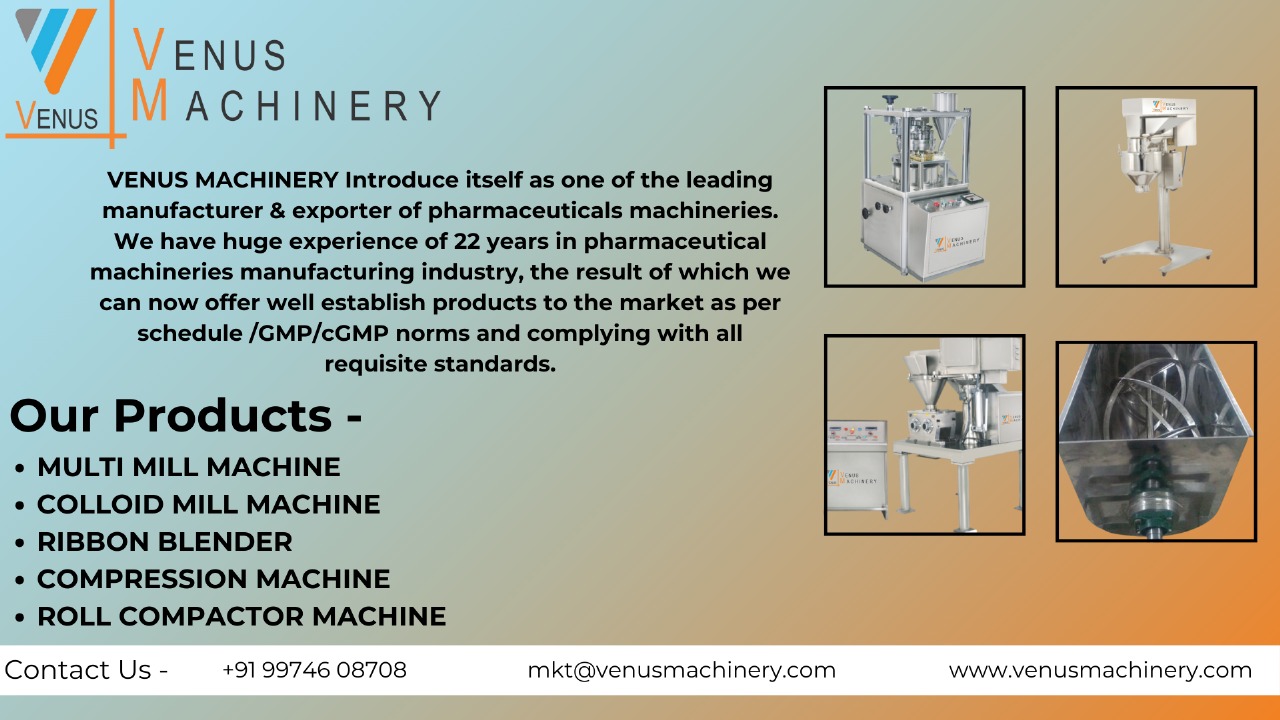Rapid Mixer Granulator (RMG) Sensors

Rapid Mixer Granulator (RMG) Sensors
RapidMixer Granulator (RMG) sensors play a critical role in ensuring precise control,
efficiency, and product consistency in pharmaceutical and chemical granulation
processes. These high-precision sensors are integrated into the RMG to monitor
key parameters such as impeller speed, chopper speed, bowl pressure,
temperature, and product moisture in real-time. By delivering accurate
data, RMG sensors help in optimizing batch processing, reducing downtime, and
ensuring compliance with GMP standards. Their rugged construction and chemical
resistance make them ideal for demanding industrial environments, supporting
automated operation and advanced process validation.
FAQs
- What are RMG sensors used
for?
RMG sensors monitor and control critical process parameters like speed, temperature, and moisture in the granulation process. - What types of sensors are
commonly used in RMGs?
Common sensors include temperature sensors (RTD or thermocouples), load cells, pressure sensors, and speed encoders. - How do sensors improve RMG
performance?
They provide real-time feedback to control systems, ensuring optimal mixing, granule size consistency, and process safety. - Are RMG sensors compatible
with PLC/SCADA systems?
Yes, modern RMG sensors are designed to integrate seamlessly with automation and data logging systems. - Can these sensors handle
high temperatures and chemicals?
Yes, industrial-grade RMG sensors are built to withstand harsh conditions in pharmaceutical and chemical environments. - What is the lifespan of an
RMG sensor?
With proper maintenance, sensors can last 37 years or more, depending on usage and environment. - Are the sensors
GMP-compliant?
Yes, sensors used in pharmaceutical-grade RMGs are compliant with GMP and FDA guidelines. - Do RMG sensors require
calibration?
Regular calibration is essential for maintaining accuracy and process validation. - Can sensors detect endpoint
in granulation?
Advanced moisture or torque sensors can help in determining the granulation endpoint accurately. - Is remote monitoring
possible with these sensors?
Yes, when integrated with smart systems, remote monitoring and diagnostics are achievable.
Top Benefits
- Real-Time Monitoring Enables immediate process
adjustments
- Improved Product Quality Ensures consistent
granule size and mix uniformity
- Reduces Human Error Automates key
measurements and data capture
- Supports Compliance Helps meet GMP and 21 CFR Part 11 standards
- Energy Efficiency Optimizes operation and
reduces wastage
- Batch Traceability Ensures every batch is
monitored and logged
- Predictive Maintenance Detects wear and tear
before failure
- Enhanced Safety Prevents overheating,
overloading, or process deviation
- Integrated Automation Works with PLC/SCADA
systems for seamless control
- Low Downtime Reduces manual
interventions and maintenance delays
Common Uses
- Monitoring granulation
temperature and consistency
- Measuring impeller and
chopper speeds
- Detecting pressure and
vacuum levels in the RMG bowl
- Indicating end-point of granulation based on torque or moisture
- Supporting data logging for
process validation
Major Applications
- Pharmaceutical Manufacturing Tablet and capsule
granule preparation
- Chemical Industry Blending and granulating
sensitive materials
- Food Processing Granule formation in flavoring or supplement production
- Nutraceuticals High-speed batch
granulation with real-time monitoring
- R&D Labs Precision process control
for experimental granulation
Contact us more detail :
Call - +91 99746 08708
Email - mkt@venusmachinery.com
Address : 29, Sarovar Industrial Estate,
Hathijan Circle, S.P. Ring Road, Vatva, Ahmedabad - 382445, INDIA
Our Blogs
- Fluid Bed Dryer Supplier in Gujarat
- HighβEfficiency Fluid Bed Dryer Gujarat
- High-Efficiency Fluid Bed Dryer Gujarat
- Fluid Bed Dryer Exporter from Ahmedabad
- SS Fluid Bed Dryer Manufacturer
- Fluid Bed Dryer for Pharma Industry
- GMP Fluid Bed Dryer Manufacturer in Ahmedabad
- Heavy-Duty Compression Machine Supplier in Gujarat
- Compression Machine for Concrete Testing in India
- Automatic Compression Testing Machine (CTM)
- Digital Compression Testing Machine
- Best Compression Testing Machine Supplier in India
- Top Compression Machine Manufacturer in Gujarat
- Compression Machine Exporters from Ahmedabad
- Compression Testing Machine Manufacturer in India
- Hydraulic Compression Machine Manufacturer in Ahmedabad
- Deburring and Dedusting Machine Manufacturer in India
- Lab Testing Compression Machine Ahmedabad
- Fluid Bed Dryer for Powder Drying in India
- Leading Compression Machine Manufacturer in Ahmedabad
- Top Fluid Bed Dryer Manufacturer in India
- Leading GMP Oscillating Granulator Machine Manufacturer
- Pharmaceutical Fluid Bed Dryer Manufacturer
- Stainless Steel Oscillating Granulator β Ahmedabad
- Fluidized Bed Dryer Supplier Gujarat
- Industrial Fluid Bed Dryer in Ahmedabad
- Oscillating Granulator for Pharma Industry
- Fluid Bed Processor Supplier in India
- SS Oscillating Granulator Exporter from Ahmedabad
- Fluid Bed Dryer Manufacturer in Ahmedabad
- Dust Extractor Machine Supplier
- Roll Compactor Manufacturers
- Ribbon Blender Manufacturer in Ahmedabad
- Electric Roll Compactor Machine Manufacturer in India
- Roller Compactor Machine for Pharmaceutical Industry
- Vibro Sifter Manufacturer in Mumbai
- Vibro Sifter Manufacturer in Ahmedabad
- Sintex Water Tank Manufacturer
- Vectus Water Tank Price 1000 Ltr
- 500 Litre Liquid Storage Tank Manufacturer
- Vibro Sifter Machine Manufacturer in India
- Liquid Storage Tank Manufacturer near Naroda, Ahmedabad
- Oscillating Granulator Machine Manufacturer
- Liquid Storage Tank Manufacturer near Ahmedabad, Gujarat
- Industrial Vibro Sifter Machine Manufacturer
- Horizontal Drive Manufacturer
- Vibro Sifter Working Principle
- Vibro Sifter Manufacturer in India
- Industrial Multi Mill Machine
- Multi Mill Machine Manufacturers
- Dust Extractor Machine Manufacturers
- Mass Mixer Machine Manufacturers
- Rapid Mixer Granulator (RMG) Sensors
- Double Cone Blender Manufacturers in India
- Colloid Mill Machine Manufacturers in Maharashtra
- Rapid Mixer Granulator (RMG) Capacity Guide
- Colloid Mill Machine Manufacturers in India
- Rapid Mixer Granulator principal (RMG)
- Roll Compactor Machine Manufacturer in Ahmedabad
- Rapid Mixer Granulator (RMG)
- Industrial Roll Compactor Machine Manufacturer Solutions
- Roll Compactor Manufacturers in India
- Double Cone Blender Construction
- Small Roll Compactor Machine Manufacturer in India
- Roll Compactor Manufacturers in India
- Double Cone Blender Pharmaceutical
- Double Cone Blender Manufacturer Near Me
- Ribbon Blender
- Cone Blender
- Octagonal Blender
- Camphor Machine
- Compression Machine
- Deburring and Dedusting Machine
- Tablet Machine
- Roll Compactor Machine
